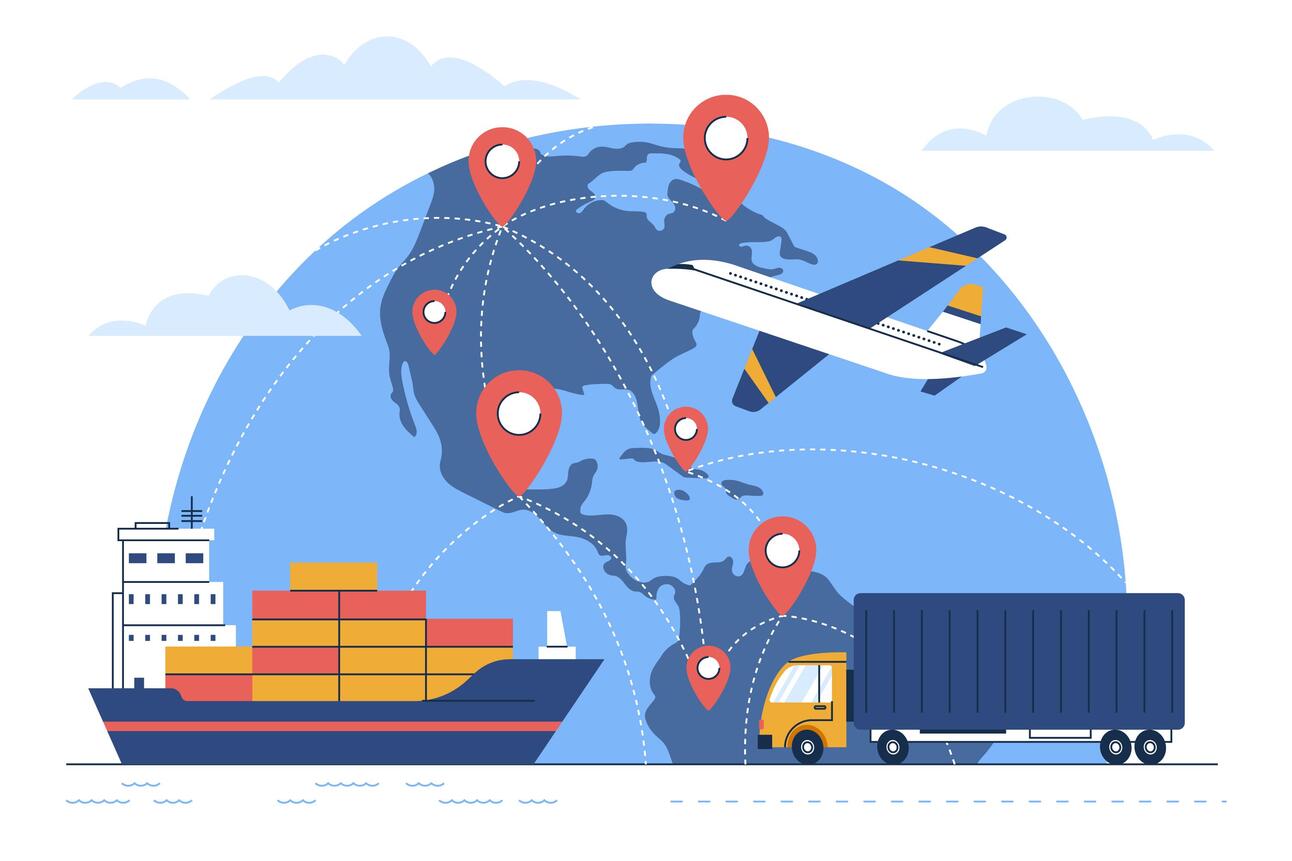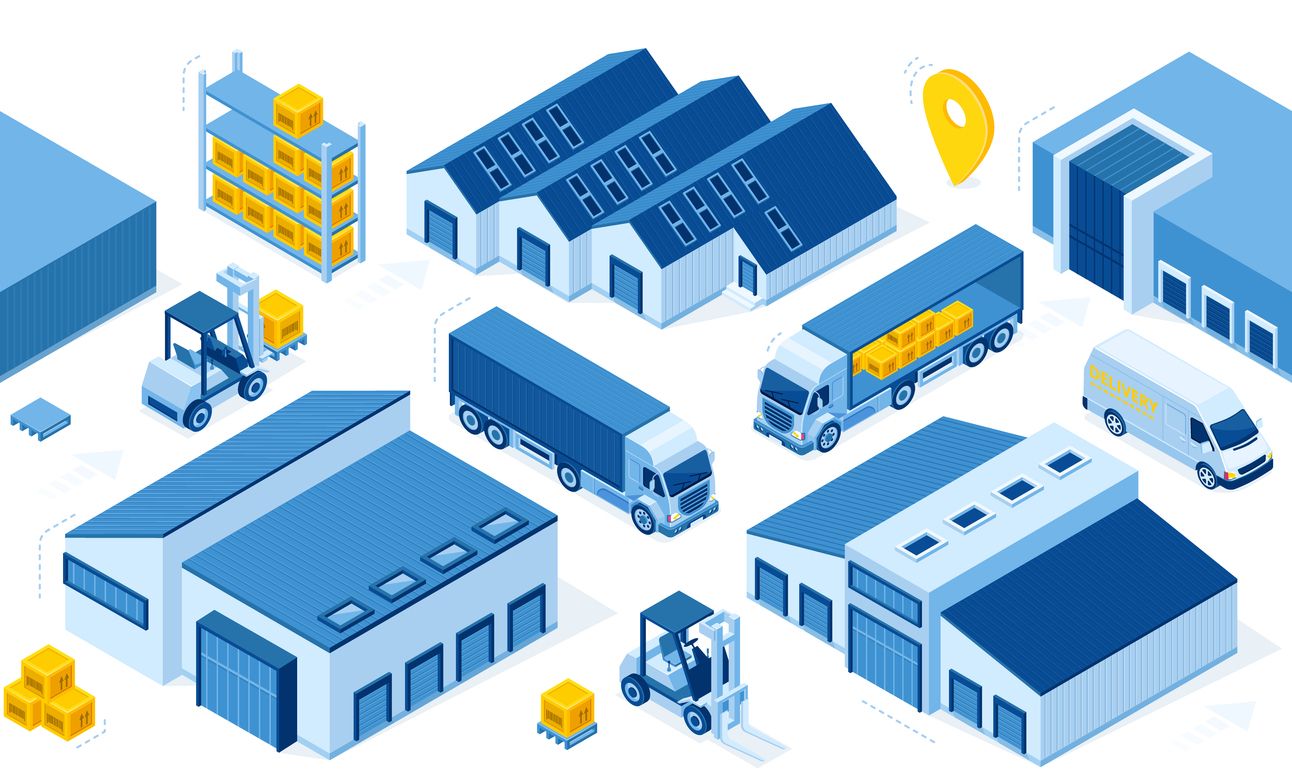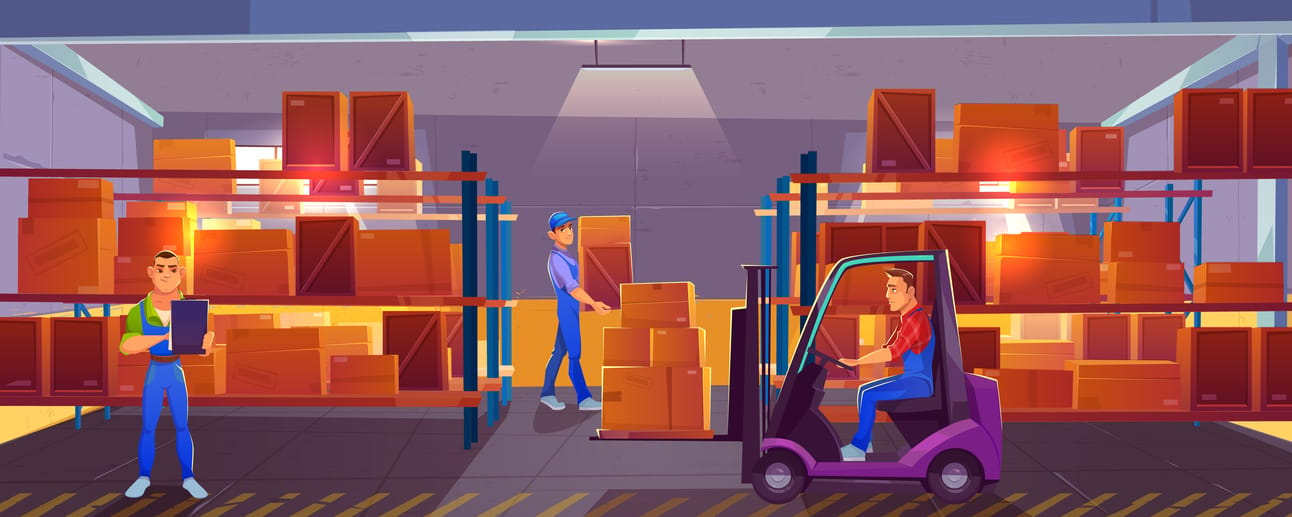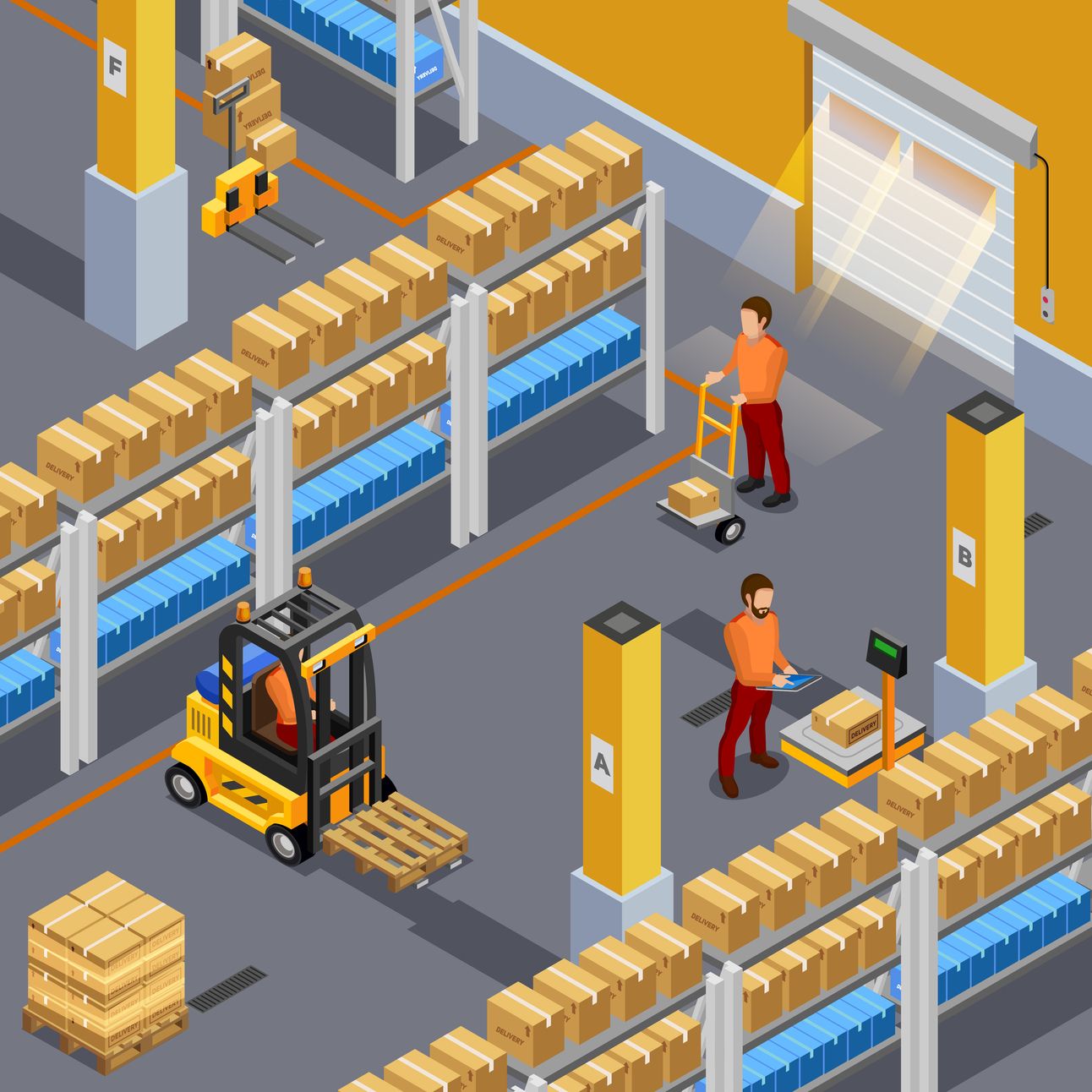- Warehouse Wisdom. Weekly.
- Posts
- Warehouse Wisdom. Weekly. 07/12/2024
Warehouse Wisdom. Weekly. 07/12/2024
Only the most relevant news for SMBs to improve logistics – picked, packed, and delivered without the bias.

Happy Friday!
Have you noticed your dollar isn't stretching as far as it used to? You’re not alone! Looks like everyone is starting to tighten their wallets because prices are going up. According to new data from Fiserv Inc., consumer spending in both grocery and retail is cooling down due to inflation. So, watch out for those prices!
And really, a lot of this week's news is about economic and global challenges. There’s Etsy updates sales policies, freight companies navigate hurricanes and theft, the U.S. cracks down on mortgage fraud, the labor market shows signs of cooling, the trucking industry recession, and more.
LOGISTICS VITALS
ETSY RELEASES NEW POLICIES OUTLINING WHAT CAN BE SOLD IN THE PLATFORM

As new players like Temu and Shein shake things up, Etsy is getting serious about what's sold on its platform by adding new Etsy policies. Especially when there has been little growth in Etsy's total gross merchandise value (GMV) in the past few years. Let’s take a look at those numbers:
$11.94 - 2024 total GMV with 2.9% growth
$11.60 - 2023 total GMV with -1.7% growth
$11.80 - 2022 total GMV with -3.5% growth
CEO Josh Silverman says they're all about keeping commerce "human." So, if the item is not made, designed, sourced, or handpicked by the seller, it's not allowed on Etsy. They're even adding labels like "Made by ShopName" to listings. So, get ready to see a lot more personal touch on Etsy!
All your news. None of the bias.
Be the smartest person in the room by reading 1440! Dive into 1440, where 3.5 million readers find their daily, fact-based news fix. We navigate through 100+ sources to deliver a comprehensive roundup from every corner of the internet – politics, global events, business, and culture, all in a quick, 5-minute newsletter. It's completely free and devoid of bias or political influence, ensuring you get the facts straight.
FREIGHT NEWS
FREIGHT BUSINESSES TRY TO DODGE HURRICANES, THEFT, AND REROUTING INVENTORY

Hurricane Beryl decided to make an entrance as a Category 1 hurricane on early Monday morning of July 8, forcing Houston and Galveston ports to close on Tuesday, July 9. Aside from maritime shipping, it caused delays for all freight modes. For instance, some airports had to cancel 1,700 flights, halting air cargo operations. FedEx and UPS also reported hazardous conditions and shipment delays, while UPS operated at a limited capacity due to power outages. Trucking also felt the pain as Maersk, the container shipping giant, mentioned that many of its facilities in Houston were without power and that some trucking operations was put on hold. And when it comes to rail, railroads BNSF and Union Pacific hit the brakes.
With all ports backed up, businesses are resorting to air freight to avoid inventory nightmares. Companies worldwide, are seeing a 20% increase in switching from sea to air freight. However, this switch comes at a cost, with firms paying up to 50% more for air freight than at the beginning of the year. Cargo planes are currently booked for the next two months, leading to expectations of rising air freight rates as peak delivery season nears. This is all due to factors like diversions caused by unrest in the Red Sea.
And is this the beginning of the end for routing Chinese goods through Mexico? Authorities from the US and Mexico announced measures to stop imports of metals from China and other countries sneaking through Mexico. The White House declared that steel and aluminum coming from Mexico will face 25% tariffs unless it's proven they were made in Mexico, the U.S., or Canada. These new tariffs deal with China trying to dodge tariffs, as they're the primary steel producer globally.
Finally, as if shipping isn’t taking enough of logistics experts time, it seems like retail theft and crime are happening all the time now; even strategic cargo robberies are on the rise! Cargo theft has shot up by 46% in the first quarter of 2024 compared to last year, with a 10% increase from the previous quarter. Post-COVID, thieves are getting craftier, as food and beverages are now on their hit list. Criminals also take advantage of lax penalties and use tricks like fictitious pickups to steal goods. Experts suggest using dedicated carriers, electronic bills of lading, and lots of documentation to stay safe!
COMMERCIAL REAL ESTATE
CONTRASTING REALITIES: CANADA’S WAREHOUSING BOOM VS. US MORTGAGE FRAUD CRACKDOWN AND BANKING TURMOIL

Canada's warehousing and storage sector has been booming, with a 3.3% compound annual growth rate. Revenue is also projected to hit $2.3 billion in 2024! Thanks to pandemic-induced e-commerce trends, demand for fancy warehousing services has increased since 2019. As if that wasn't enough, strong economic conditions and many shopping sprees have also fueled the supply chain's need for more storage solutions. And hey, let's not forget about those inventory management technologies that are making everything run like a well-oiled machine.
But it’s a different story in the US.
U.S. prosecutors are on the hunt for commercial mortgage fraudsters, catching them red-handed with their 'doctored numbers.' They're really stepping up their game to tackle this issue, especially with the current slump in commercial real estate values. People have been getting creative with their financials and property valuations, taking advantage of the wild times in the CRE market. But prosecutors aren't messing around - they're cracking down on the $4.7 trillion property loans market like never before.
Meanwhile, regional banks in the U.S. are in for a rough ride with commercial real estate loans! With risks on the rise and interest rates climbing, banks are bracing for higher loan losses. They're beefing up reserves and cutting back on stock buybacks to cushion the blow. The Federal Reserve's stress tests suggest potential losses could reach a staggering $571 billion in a worst-case scenario.
WAREHOUSE LABOR
TRUCKING JOBS HOLD STEADY AMID RATE WOES, WHILE LABOR MARKET SHOWS SIGNS OF COOLING IN JUNE

Trucking jobs finally took a break from their losing streak in June, but the fun might not last long. It's projected that more losses are on the horizon due to high capacity and low rates. The Bureau of Labor Statistics reported only 100 trucking jobs lost in June, marking the third straight month of decline. And as trucking jobs stay flat in June, it might just be the calm before the storm of summer peak season rate hikes.
The overall labor market is cooling. According to the latest report from the US Department of Labor, June saw employers add 206,000 payroll jobs — not too shabby, huh? It slightly exceeded the economist's forecast of 190,000. However, we're seeing signs of a cooling labor market through various measures. The report's most crucial numbers were the downward revisions to job growth estimates in April and May.
SHIPPING
NJ LEGISLATION RESHAPES PACKAGING SIZES AS TRUCKING INDUSTRY FACES RECESSION AND ROYAL MAIL SHIFTS TO ROAD DELIVERY

Legislators in New Jersey are considering laws that will make you downsize your shipping boxes! The New Jersey Senate passed a bill that would stop big online and major retailers in the state from shipping products in boxes that are more than twice the size of the product. This is just one of many packaging and plastic-related bills being considered in NJ, including one that puts the responsibility back on producers for the packaging.
The trucking industry is in a bit of a pickle despite hopes for a post-COVID rebound - it's now known as the "Great Freight Recession.” After the initial pandemic demand surge, there are too many trucks and insufficient freight, so rates are stuck around $1.60 per mile. Analysts say it's because of tech efficiencies and cheap credit from the SBA's EIDL program. This $37 billion injection helped small carriers stay afloat, but now the repayment is looming. And with old trucks falling apart and costs going up, things are getting tricky. Looks like the industry will be bracing for more pandemic-era volatility.
Meanwhile, one company saves money by switching from rail delivery to road delivery. Royal Mail is making a big change after nearly 200 years - no more choo-choo trains for delivering post! They will decommission their freight trains by October 10th and rely more on road delivery instead. Apparently, getting parts for maintenance has been a challenge. Who needs trains when you can just drive, right?
MARKETPLACES
RETAIL TRENDS: STREAMLINING CHOICES, SHEIN’S LOGISTICS LEAP, AND RE-SALE AND RE-FURBISH STRATEGIES

Brands and retailers are playing a little game of “let's cut back on choices” with shoppers. They're cutting back on options and trimming the ones that don't sell well, believing less is more to boost profits. It's like they're saying "out with the old, in with the new" as they focus on what consumers really want. Plus, supply-chain issues are making it hard to stock various items. It's like a product purge, but for business!
Shein, the fast-fashion giant, is dipping its toes into logistics software and is currently in beta testing with some supply chain partners. Trying to generate more revenue and boost its market position, Shein is exploring new avenues. However, U.S. cybersecurity firms and national security experts are raising eyebrows. They worry about Shein's connections to China possibly leading to data access and espionage, putting global supply chains at risk. Especially with its vast supply chain network - that's a whole new level of drama.
Brands on Amazon are navigating new challenges thanks to FBA fee adjustments. Sellers now have to juggle fees for keeping inventory levels low, with penalties avoided by maintaining a four-week stock balance. This change is all about getting your products closer to customers for faster shipping and better ad performance. However, sellers are not happy with the lack of transparency and uncertain financial impacts - they want clearer rules and more flexibility. As logistics get trickier, brands should start sharpening their forecasting skills and consider some outside help to stay afloat.
And retailers are investing more in resale and refurbish strategies…
Once you go secondhand, you rarely go back to regular retail! The U.S. resale market is growing ten times faster than traditional retail, with global projections hitting $350 billion by 2028. James Reinhart, founder of ThredUp, says people of all ages are now into secondhand shopping. People are all about sustainability now and expect retailers to be all circular. So, retailers that don't get on board risk getting left behind in today's market. So, don't be a fashion dinosaur!
And have you heard of Walmart Restored? This program lets approved sellers list refurbished inventory. And guess what? They're expanding the program! They're adding "Restored: Good" and "Restored: Fair." To top it off, they're giving the current Restored conditions a makeover - "Restored: Premium" and "Restored: Like New." Walmart is telling approved sellers these new conditions will help them spice up their catalog. So hop on board the refurbishment train!
WAREHOUSE QUICK DELIVERIES
WALMART EXPANDS PERISHABLE WAREHOUSES WHILE LA & LONG BEACH INVEST IN EV CHARGING
Walmart Expands it’s Perishable Warehouse Network to Meet Demands
Ports of LA and Long Beach Invests in EV Charging Stations for $25 Million
Amazon & Salesforce Invest in Saks/Neiman Marcus Merger
Yankee Candle Closes Warehouse, Lays Off 100
“More and more retailers are realizing that today’s consumer no longer wants an endless aisle—they want the right aisle.”

